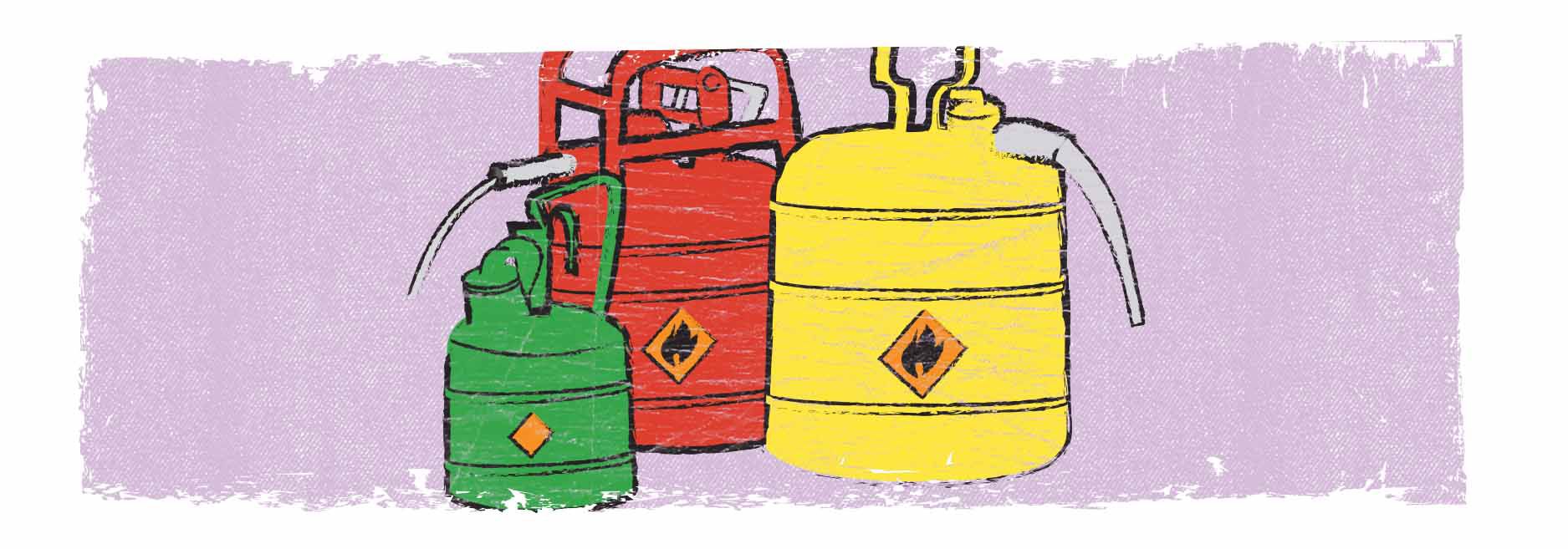Hazmat on the go – Transportation regulations: Flammable and combustible liquids
By Kathryn Novelli
Senior Marketing Analyst

Handling and transporting hazardous materials are realities of a modern and dynamic supply chain. Whether the hazardous cargo is a final product destined for market or a byproduct of the production process that must be disposed of, hazardous materials transportation remains a necessary part of contemporary commerce.
Traveling with hazardous materials is serious business and maintaining safety is of the utmost importance. To help workers stay safe, the United States Department of Transportation (DOT), established in 1966, and its operating organizations oversee regulations and requirements for the safe transportation of hazardous materials. The Federal Motor Carrier Safety Administration (FMCSA) and the Pipeline Hazardous Materials Safety Administration (PHMSA) work in tandem to advise and enforce regulations in relation to the DOT’s nine classes of hazardous materials.
The next stop on our Hazmat on the Go series is Class 3: Flammable and Combustible Liquids.
Examples of flammable or combustible liquids include substances like acetone, ethanol, benzene, biodiesel, crude oil, gasoline and other petroleum products. Since these substances are used as sources of fuel or included as part of the manufacturing processes, they are frequently transported by road and rail and are subject to detailed regulations by the DOT and FMCSA, along with the Occupational Health and Safety Administration (OSHA) and other organizations.
Flammable and combustible liquids are classified by OSHA by flash point, the temperature at which a compound gives off enough vapor to ignite in the air, and boiling point, the temperature at which a liquid boils and turns to vapor. The categories are ordered from most to least dangerous:
- Category 1 – flash point below 73.4°F (23°C) and having a boiling point at or below 95°F (35°C)
- Category 2 – flash point below 73.4°F (23°C) and having a boiling point above 95°F (35°C)
- Category 3 – flash point at or above 73.4°F (23°C) and at or below 140°F (60°C)
- Category 4 – flash point above 140°F (60°C) and at or below 199.4°F (93°C)
- Any flammable liquid with a flash point greater than 199.4°F (93°C) that has been heated for use to within 30°F (16.7°C) of its flash point is to be handled in accordance with the requirements for a Category 4 flammable liquid.
In conjunction with OSHA’s classification system for flammable and combustible liquids, the DOT and FMCSA classify flammable and combustible liquids by using flash point data. Substances whose flash point is not more than 141°F are classified as flammable liquids, which includes all substances under OSHA flammable liquid categories 1, 2 and 3. Liquids whose flash point is greater than 141°F but less than 200°F are classified as combustible liquids.
When considering flammable and combustible liquids, it is important to remember that the vapor of the liquid is flammable, not the liquid itself. Therefore, flash point benchmarks are used for the classification of flammable liquids because they serve as a direct representation of a liquid’s ability to generate vapor and cause a fire hazard. When vapors of a flammable liquid are mixed with air in the proper proportions, this is known as the flammable range, which can cause a rapid combustion or an explosion if ignited. Since most vapors are heavier than air, they will spread along the ground and collect in low or confined areas.
Due to the level of danger presented by flammable or combustible liquids, special care must be taken in handling an emergency response. During fire hazard events, it’s recommended that emergency responders wear positive pressure self-contained breathing apparatus (SCBA) and other PPE that helps prevent toxic effects of vapors if inhaled or absorbed through skin. Fire will often produce irritating, corrosive and/or toxic gases, and vapors may cause dizziness or asphyxiation. Depending on the vapor fueling the fire, different firefighting methods should be used, including dry chemical, CO2, water spray and/or regular foam.
As with all nine classes of hazardous materials categorized by the DOT and FMCSA, flammable and combustible liquids must be placarded correctly during transportation and all handling requirements must be adhered to. Flammable and combustible liquids often have strict storage regulations regarding container size, quantity, location and other elements, along with transfer requirements including guidelines for grounding, bonding, piping, ventilation and more.
In 2006, at a chemical mixing area of a manufacturing facility in Illinois, an operator was mixing and heating flammable liquids that included heptane and mineral spirits in an open-top, 2,200-gallon tank equipped with steam coils. A dense fog began to accumulate on the floor below the tank as an ingredient was added. Within about ten minutes, the operation was shut down and most workers had evacuated the area. Unfortunately, the vapor cloud was ignited, causing one death and two injuries. The pressure of the blast was so forceful, the doors to an adjacent area of the building were blown open.
Whether in the workplace or in transport, flammable and combustible liquids are highly volatile and require absolute diligence when handling.
Knowledge of transportation regulations and best practices for hazardous materials is paramount to keeping people safe, on and off the road. Through diligent adherence to safety standards and awareness of emergency response procedures, hazmat transporters can help keep roads safe for everyone.
To learn more about how to protect yourself from different hazardous materials and to find out which DuPont products may offer suitable protection for your needs, visit SafeSPEC™.
Do you have a story you’d like to share about transporting hazardous materials? Email kathryn.novelli@dupont.com to discuss being featured in our next edition of the Glow Worm.
